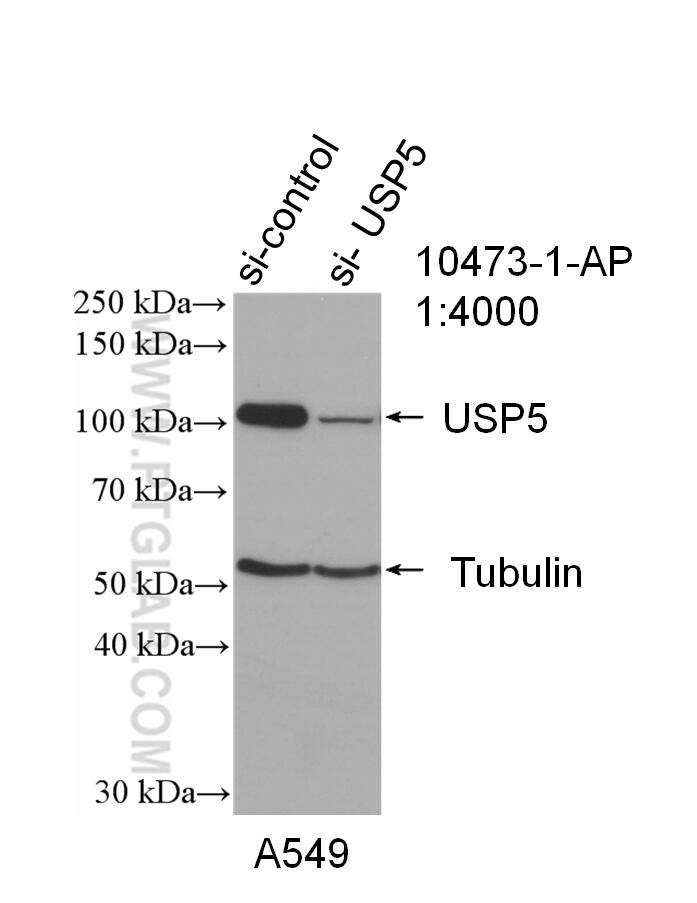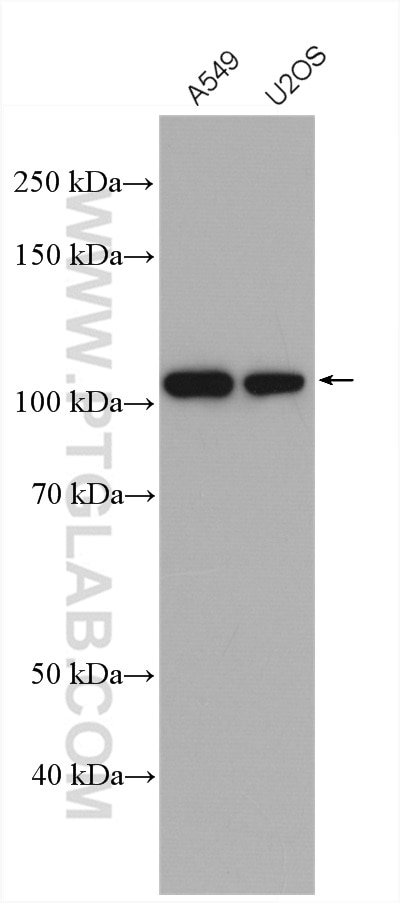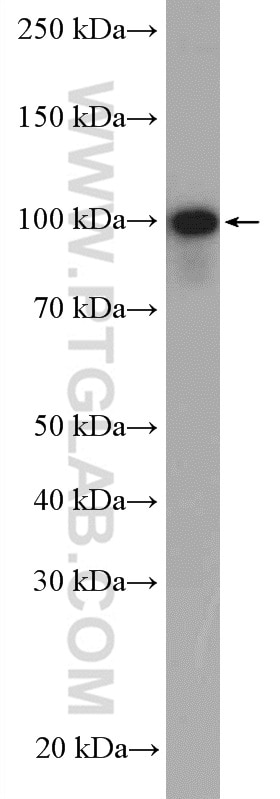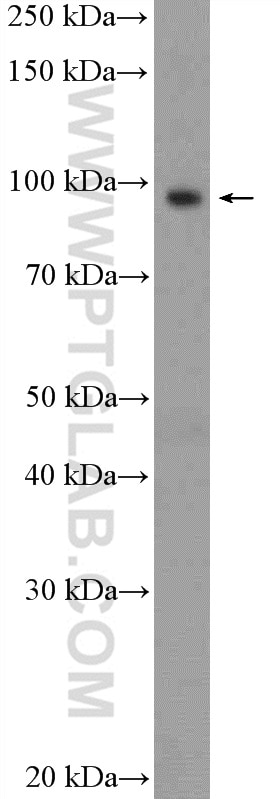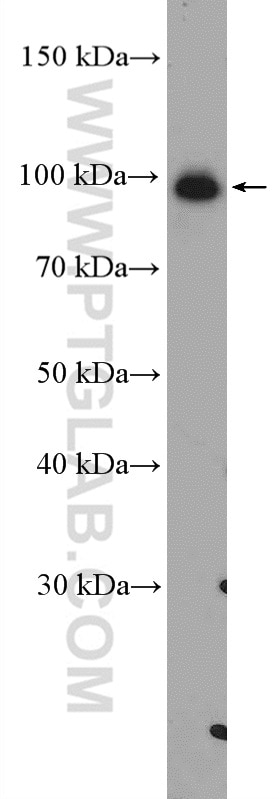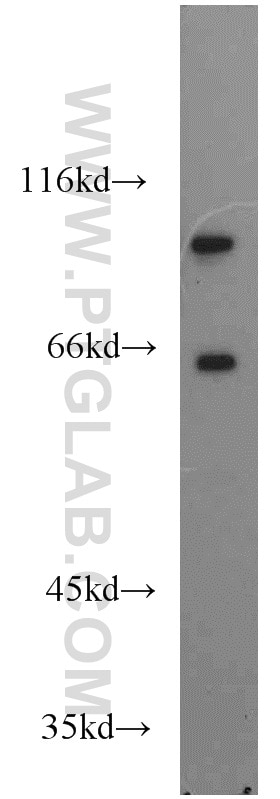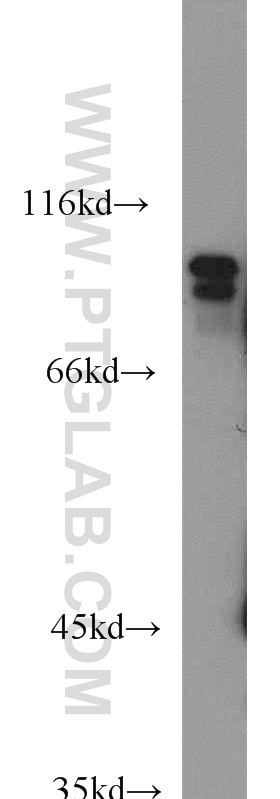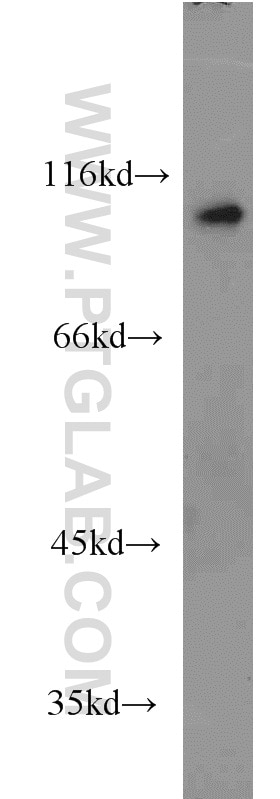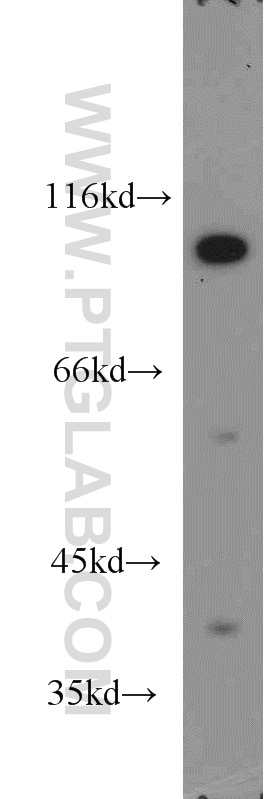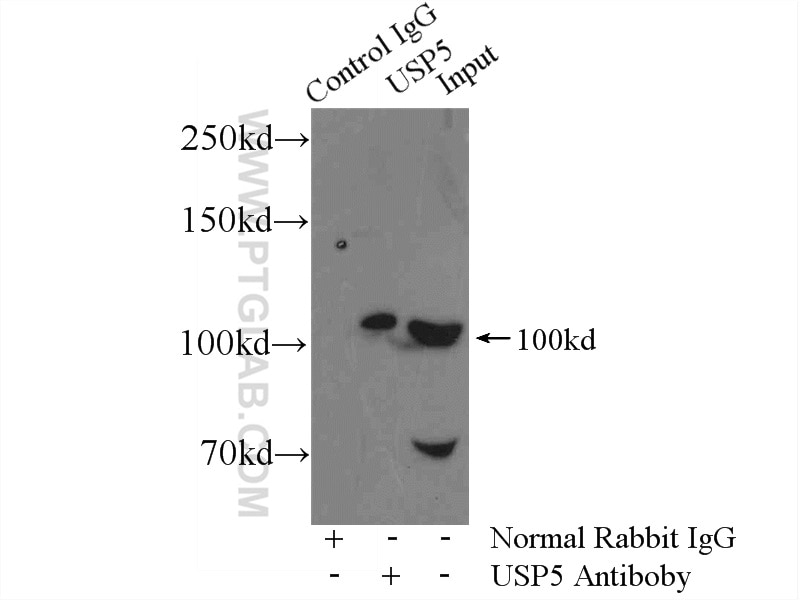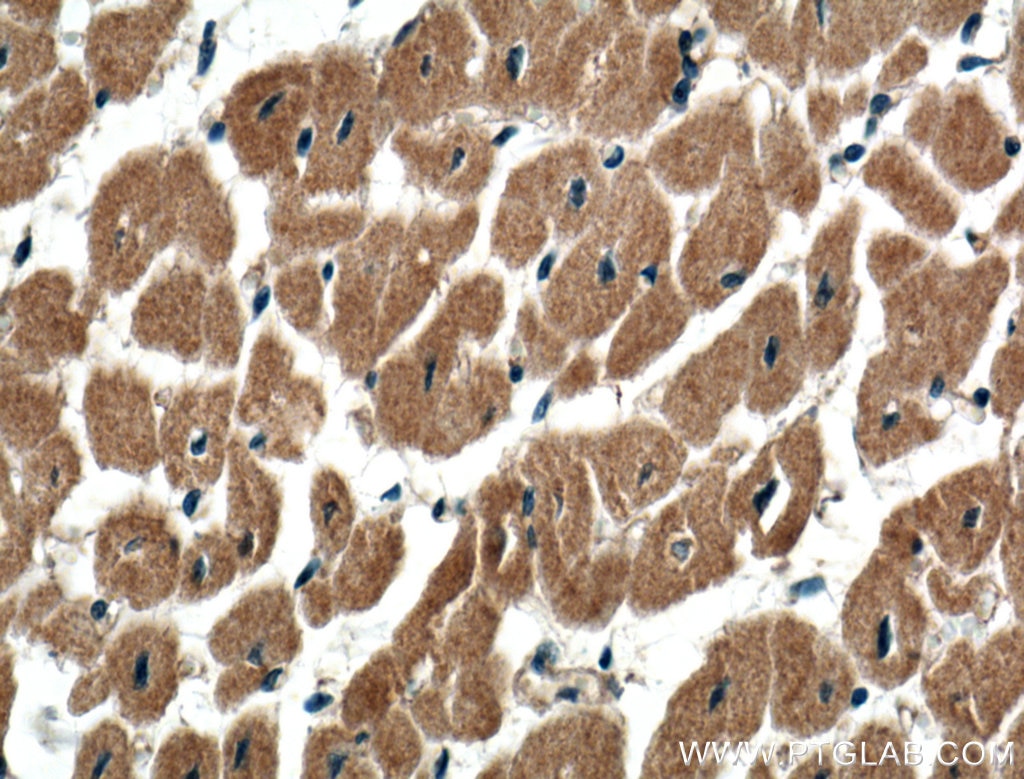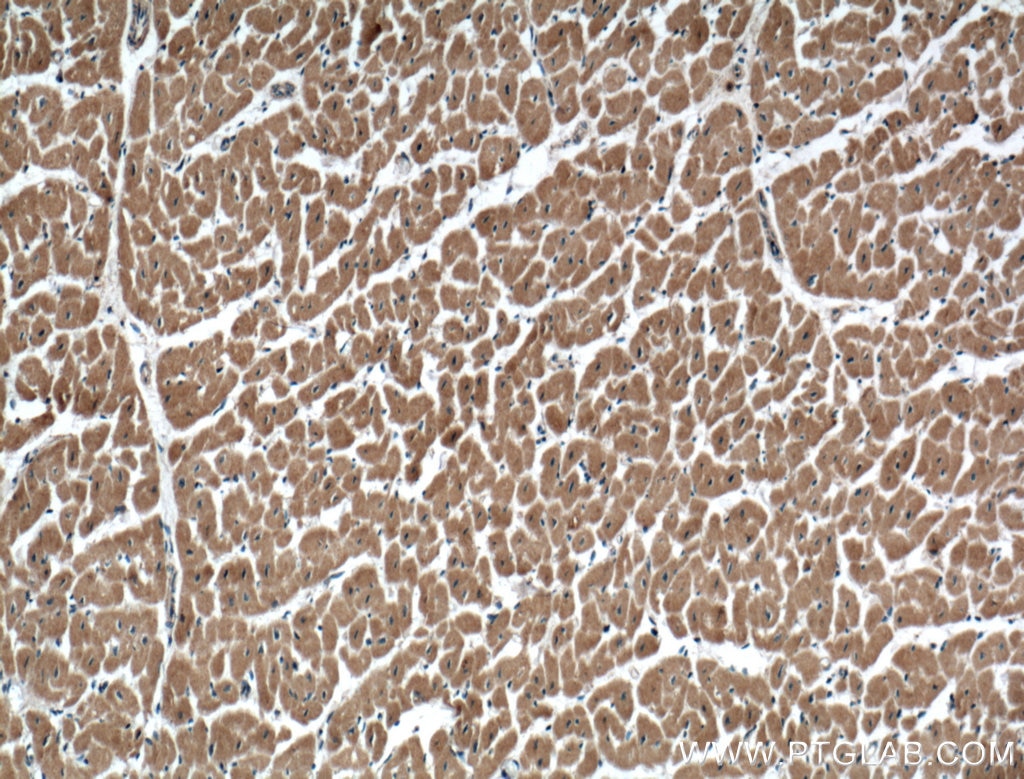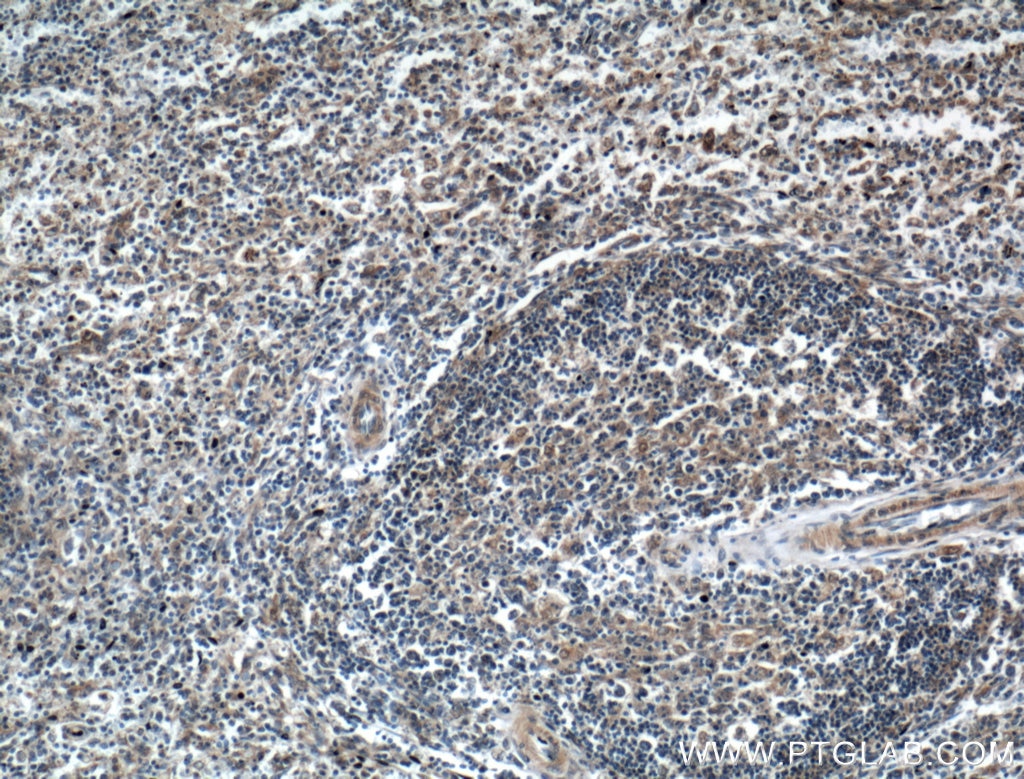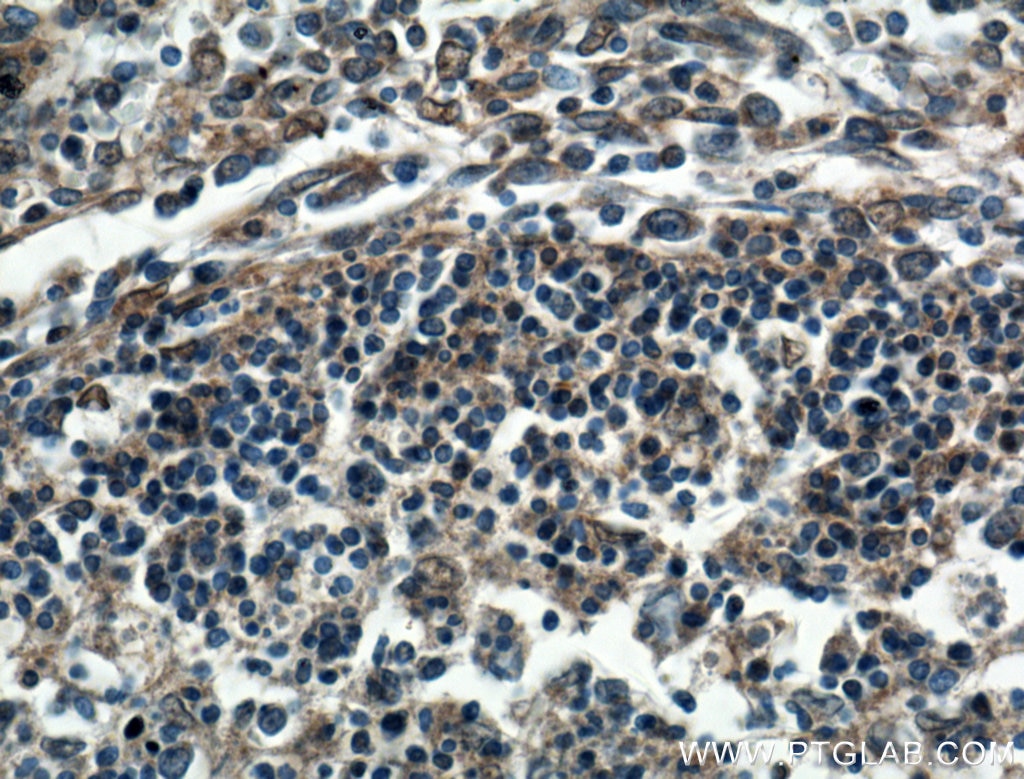- Phare
- Validé par KD/KO
Anticorps Polyclonal de lapin anti-USP5
USP5 Polyclonal Antibody for WB, IHC, IP, ELISA
Hôte / Isotype
Lapin / IgG
Réactivité testée
Humain, rat, souris et plus (1)
Applications
WB, IHC, IF, IP, CoIP, ELISA
Conjugaison
Non conjugué
N° de cat : 10473-1-AP
Synonymes
Galerie de données de validation
Applications testées
| Résultats positifs en WB | cellules A549, cellules DU 145, cellules U2OS, tissu cardiaque humain, tissu cérébral de souris, tissu de côlon humain |
| Résultats positifs en IP | tissu cérébral de souris |
| Résultats positifs en IHC | tissu cardiaque humain, tissu splénique humain il est suggéré de démasquer l'antigène avec un tampon de TE buffer pH 9.0; (*) À défaut, 'le démasquage de l'antigène peut être 'effectué avec un tampon citrate pH 6,0. |
Dilution recommandée
| Application | Dilution |
|---|---|
| Western Blot (WB) | WB : 1:2000-1:12000 |
| Immunoprécipitation (IP) | IP : 0.5-4.0 ug for 1.0-3.0 mg of total protein lysate |
| Immunohistochimie (IHC) | IHC : 1:100-1:400 |
| It is recommended that this reagent should be titrated in each testing system to obtain optimal results. | |
| Sample-dependent, check data in validation data gallery | |
Applications publiées
| KD/KO | See 18 publications below |
| WB | See 42 publications below |
| IHC | See 8 publications below |
| IF | See 5 publications below |
| IP | See 6 publications below |
| ELISA | See 2 publications below |
| CoIP | See 3 publications below |
Informations sur le produit
10473-1-AP cible USP5 dans les applications de WB, IHC, IF, IP, CoIP, ELISA et montre une réactivité avec des échantillons Humain, rat, souris
| Réactivité | Humain, rat, souris |
| Réactivité citée | rat, Humain, porc, souris |
| Hôte / Isotype | Lapin / IgG |
| Clonalité | Polyclonal |
| Type | Anticorps |
| Immunogène | USP5 Protéine recombinante Ag0770 |
| Nom complet | ubiquitin specific peptidase 5 (isopeptidase T) |
| Masse moléculaire calculée | 96 kDa |
| Poids moléculaire observé | 95-105 kDa |
| Numéro d’acquisition GenBank | BC004889 |
| Symbole du gène | USP5 |
| Identification du gène (NCBI) | 8078 |
| Conjugaison | Non conjugué |
| Forme | Liquide |
| Méthode de purification | Purification par affinité contre l'antigène |
| Tampon de stockage | PBS with 0.02% sodium azide and 50% glycerol |
| Conditions de stockage | Stocker à -20°C. Stable pendant un an après l'expédition. L'aliquotage n'est pas nécessaire pour le stockage à -20oC Les 20ul contiennent 0,1% de BSA. |
Informations générales
USP5, also named as ISOT, belongs to the peptidase C19 family. Knock-down of USP5 causes the accumulation of TP53/p53 and an increase in TP53/p53 transcriptional activity because the unanchored polyubiquitin that accumulates is able to compete with ubiquitinated TP53/p53 but not with MDM2 for proteasomal recognition. USP5 is a potential target for p53 activating therapeutic agents for the treatment of cancer(PMID: 19098288). It is a novel proteasome associated protein(PMID: 19182904). USP5 cleaves linear and branched multiubiquitin polymers with a marked preference for branched polymers. USP5 has 2 isoforms with the molecular mass of 96 kDa and 93 kDa.
Protocole
| Product Specific Protocols | |
|---|---|
| WB protocol for USP5 antibody 10473-1-AP | Download protocol |
| IHC protocol for USP5 antibody 10473-1-AP | Download protocol |
| IP protocol for USP5 antibody 10473-1-AP | Download protocol |
| Standard Protocols | |
|---|---|
| Click here to view our Standard Protocols |
Publications
| Species | Application | Title |
|---|---|---|
Nat Commun STREAMING-tag system reveals spatiotemporal relationships between transcriptional regulatory factors and transcriptional activity | ||
Exp Mol Med MSK1 promotes colorectal cancer metastasis by increasing Snail protein stability through USP5-mediated Snail deubiquitination
| ||
Blood The ubiquitin ligase HERC4 mediates c-Maf ubiquitination and delays the growth of multiple myeloma xenografts in nude mice. | ||
Theranostics Ubiquitin specific peptidase 5 regulates colorectal cancer cell growth by stabilizing Tu translation elongation factor.
| ||
Cell Mol Life Sci P62 promotes FSH-induced antral follicle formation by directing degradation of ubiquitinated WT1
| ||
Clin Transl Med MAFG-AS1 promotes tumor progression via regulation of the HuR/PTBP1 axis in bladder urothelial carcinoma.
|
